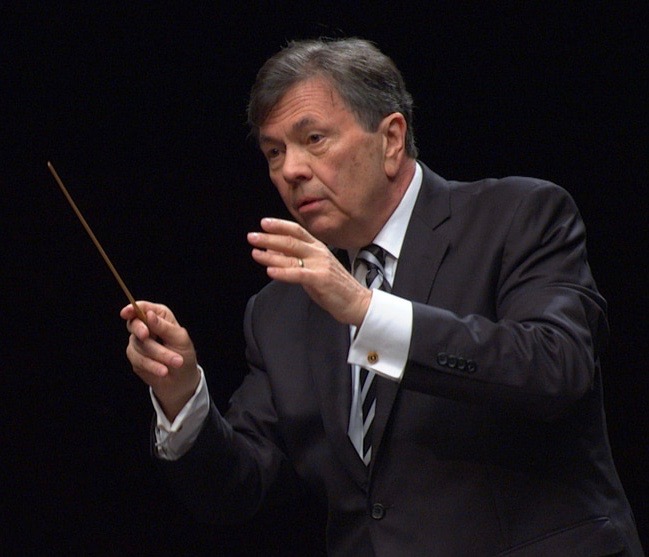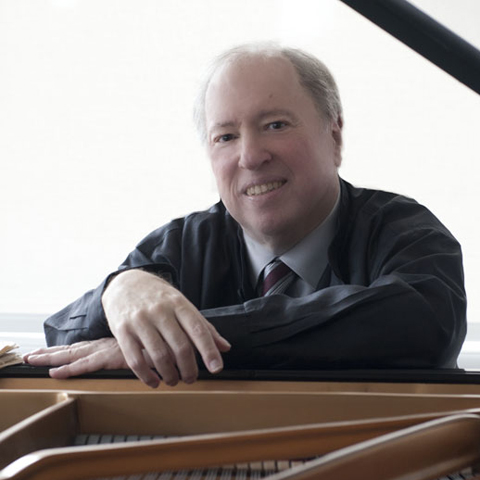Pianist Gutiérrez provides the high point in Palm Beach Symphony’s Beethoven season-opener

New music director Gerard Schwarz conducted the Palm Beach Symphony in an all-Beethoven concert Sunday afternoon at the Kravis Center.
The Palm Beach Symphony opened its 46th season Sunday afternoon at the Kravis Center with an all-Beethoven program, a packed house and a new music director on the podium.
Gerard Schwarz, former music director of the Seattle Symphony, has quickly become a major player in the classical scene of South Florida, where he also serves as music director of the University of Miami’s Frost Symphony Orchestra. His appointment in Palm Beach was a coup for the orchestra, a growing ensemble with a loyal following that was fortunate to attract such a distinguished musician.
After the traditional season-opening performance of The Star-Spangled Banner, Schwarz led the orchestra through two Beethoven classics to mark the 250th anniversary of the composer’s birth: The Piano Concerto No. 4 and the Symphony No. 9.
Thanks to a strong soloist and tight ensemble precision, the concerto came off with more consistent success. The symphony offered many rewards, but there were rough spots and places where the immense drama of the work felt lost.
The world premiere of Beethoven’s Piano Concerto No. 4 took place in Vienna in 1808 at what must have been the greatest all-Beethoven concert in history. The composer himself handled the piano part at an event that included the world premieres of his Fifth Symphony, Sixth Symphony and Choral Fantasy. And then, since the program was apparently a little light, Beethoven included excerpts from his Mass in C, a soprano aria and his own improvisation at the piano.

At the concert in West Palm Beach, the piano part was taken by the Cuban-born, American-educated pianist Horacio Gutiérrez. At age 71, he retains a formidable technique. A couple of mushy passages in the opening minutes were apparently flukes because he played in a firm, accurate and confident manner throughput the balance of the concerto.
The musicians gave a straightforward and satisfying account of one of Beethoven’s most popular concertante works. Gutiérrez played the unaccompanied opening chords in a patrician and sonorous manner. In the long orchestral passage that follows the solo opening, Schwarz led the orchestra through a crescendo of force and grandeur. In melodies such as the lyric second theme, Gutiérrez played in a fluent style, with a slight stretching of the rhythm to allow the music to take flight. He played in a muscular, percussive style in passages such as one in which the bass plays fast ascending figures under a filigree of notes in the right hand.
In the opening of the brief Andante, strings played in an aggressive, forward-leaning manner, making the contrast all the greater with the gentle tones of the piano. Gutiérrez drew particularly cloud-like, ethereal tones from the piano in a series of unearthly descending harmonies.
In the Rondo, the orchestra played the memorable theme with precision and a touch of military swagger. Gutiérrez matched them, playing in a muscular, vigorous manner that gave the concerto all the energy it needed.
After intermission, the orchestra scaled the symphonic Everest of the Ninth Symphony, delivering a mixed performance but overall one with more strengths than weaknesses.
The first movement’s mysterious opening, which would inspire Wagner, Bruckner and Mahler, came off as particularly tense and brooding, possibly because the accompaniment in strings seemed especially prominent. Under Schwarz, the opening minutes were highly dramatic with emphatic chords and grim, grinding passages.
There was some scrappy playing in the strings, with intonation issues that would come and go throughout the performance. But this was a forceful account of the movement, with crescendos that arrived with the shock of a surprise attack.
The Scherzo came off with high-strung precision. Each section entered the contrapuntal melee with firm, crisp bite. The trio was especially pastoral, with broad playing in winds and strings that contrasted with the surrounding tension. The Adagio was flowing and lyrical, but with a restless undercurrent and the lofty classical restraint that’s a mark of Beethoven’s slow movements.
The finale, of course, is the most famous part of the symphony. The Ode to Joy melody, used for such diverse purposes as the Rhodesian national anthem and the celebration of European unity, has become so overfamiliar that it can be difficult to appreciate the symphony on its own terms as a concert work.
Here the orchestra’s playing was the most uneven. The menacing, dissonant flourish with which the movement opens, for example, came off as distant, vague and subdued, without the brutal force it has in the most effective performances. And through many rapid passages, strings lacked precision and experienced intonation issues.
The quartet of soloists—soprano Sandra Lopez, mezzo-soprano Robynne Redmon, tenor Stuart Neill and bass-baritone Clayton Brainerd—created a balanced, expressive and tonally rich ensemble that easily carried over the orchestra.
In his declaration “O Freunde, nicht diese Töne,” Brainerd delivered the power necessary to turn the symphony in its new direction, and he followed with an expressive and dark-hued account of his solo. Neill gave a jaunty, rollicking account of his part, over the military-band tones of the orchestra. Lopez sang with warm tones and an effective intensity.
Handling the choral duties were the Palm Beach Atlantic University Oratorio Chorus, the Choral Society of the Palm Beaches and the Masterworks Chorus of the Palm Beaches. Their ensemble vocalism and balanced, jubilant performance, full of choral grandeur, provided the symphony with a suitably joyful finale.
Posted in Performances
One Response to “Pianist Gutiérrez provides the high point in Palm Beach Symphony’s Beethoven season-opener”
Leave a Comment
Mon Dec 9, 2019
at 11:42 am
1 Comment





Posted Dec 10, 2019 at 7:06 am by Katherine Wagner-Reiss
Sunday was my first visit to the Kravis Center. Thank you for this review; it added so much to my understanding of the concert. I agree that the pianist, Horacio Gutierrez, was the highlight. I will just add that one could not have asked for a more enthusiastic audience.